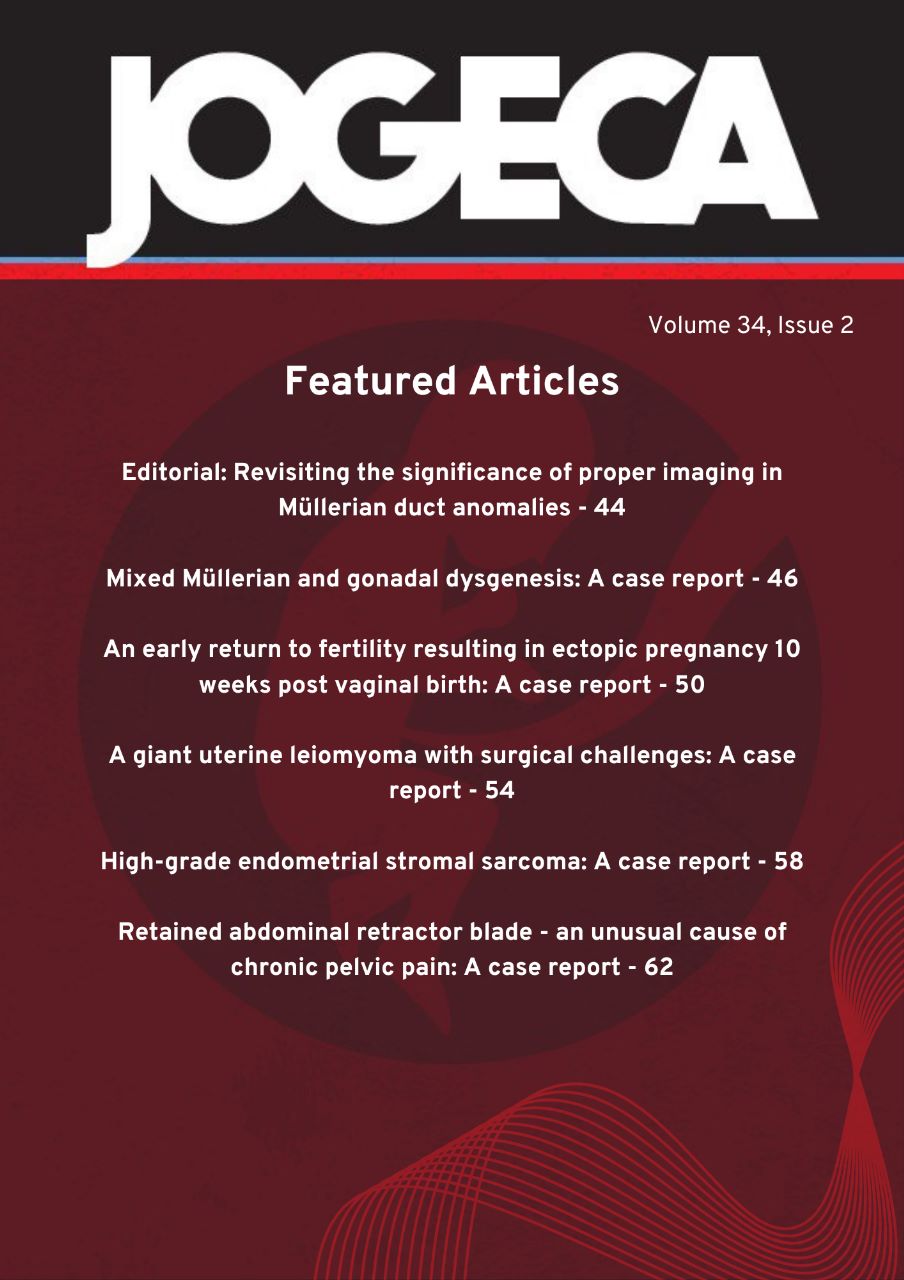RISK FACTORS FOR INVASIVE CERVICAL CANCER AMONG WOMEN LIVING WITH HIV/AIDS AT JARAMOGI OGINGA ODINGA TEACHING & REFERRAL HOSPITAL IN KISUMU COUNTY: A 5-YEAR HOSPITAL BASED CASE-CONTROL STUDY.
DOI:
https://doi.org/10.59692/jogeca.v32i1.197Keywords:
Human Immunodeficiency Virus, invasive cervical cancerAbstract
Background: Cervical cancer is the leading cause of mortality among reproductive women in resource constrained countries especially among the HIV infected group. HIV infection accelerates the transition of cervical dysplasia to invasive cervical cancer. An overview of the risk factors among the HIV infected women in this county is significant despite the paucity of data in this setting.
Objective: To determine the risk factors of invasive cervical cancer in HIV-infected women in Kisumu County. Methodology
Study design: An unmatched 5 year case control study from 2012-2016.
Study setting: Jaramogi Oginga Odinga Teaching and Referral Hospital, largest hospital in Western Kenya. Study population: A total of 200 patient records, 100 cases and controls each.
Data collection and analysis : A structured questionnaire was used as a standard tool for extraction of data from both cases and controls. The determinants of invasive cervical cancer were analyzed using univariate and multivariate analysis. Relevant tests to determine statistical significance were also carried out, p-value of <0.05 was considered statistically significant.
Results: HIV-infected women with invasive cervical cancer had poor socio-economic status, lower education level (p=0.028), a higher parity (p=0.001), they also lived far away from the hospital facility (p=<0.0001,OR 4.6,C.I 1.62-12.9) and had a lower CD4 count (OR 18.6,C.I4.0-86.6) than those without invasive cervical cancer.
Conclusion: Majority of the HIV-infected women with invasive cervical cancer had poor socio-economic status, lived far away from the hospital facility, had done more prior pap smears and had a lower CD4 count than those without.
Downloads
Published
How to Cite
Issue
Section
Categories
License
Copyright (c) 2020 The Authors.

This work is licensed under a Creative Commons Attribution 4.0 International License.




